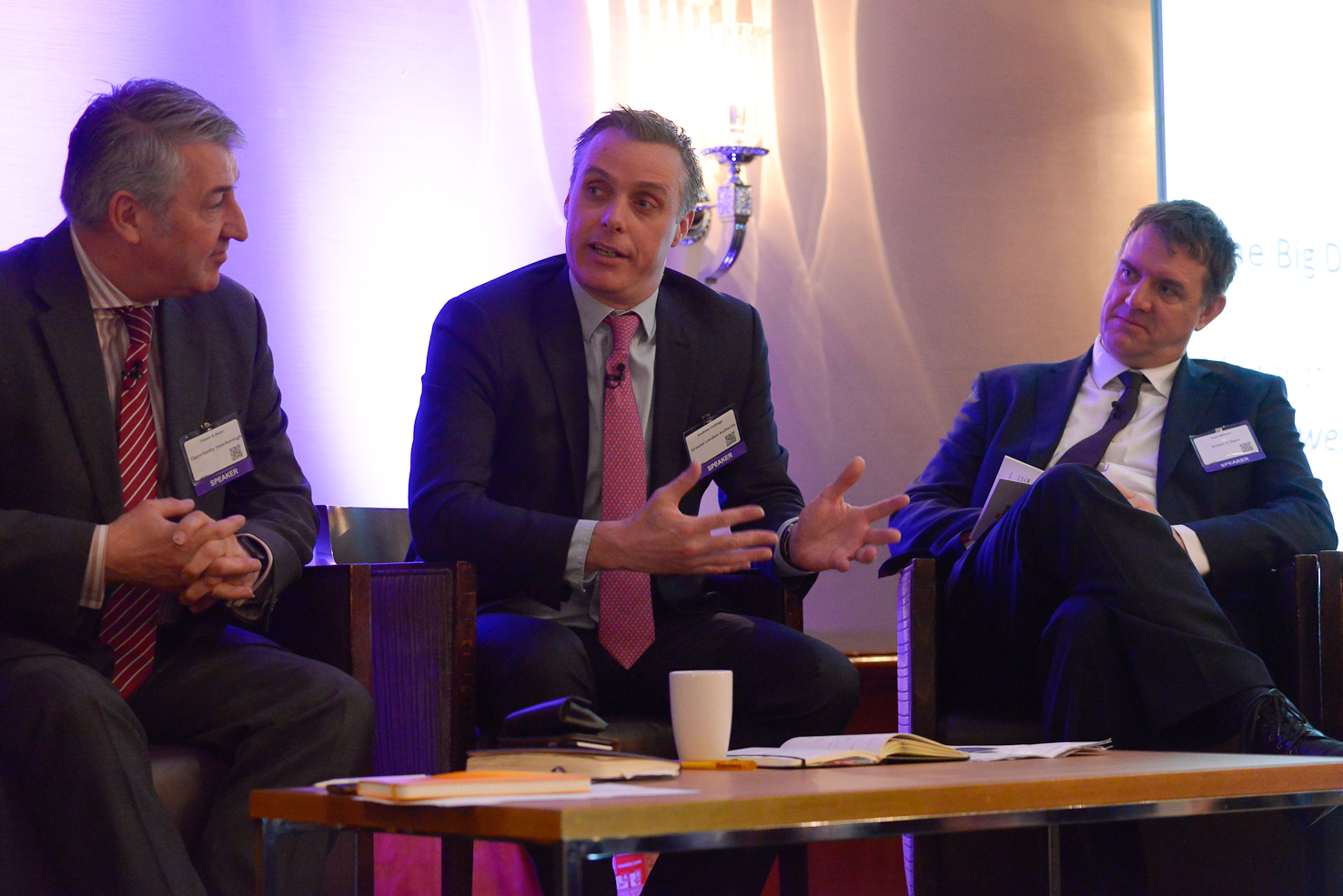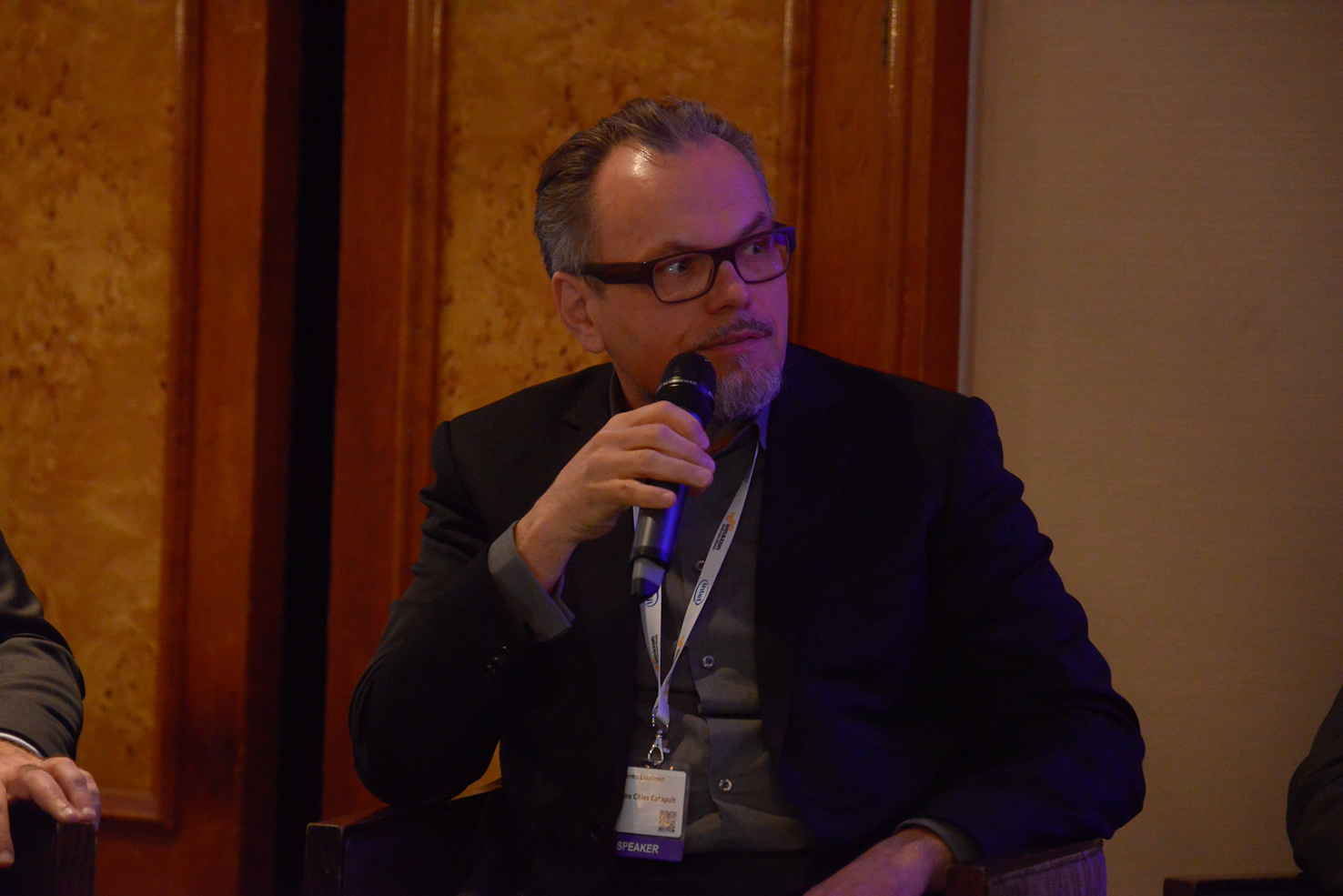
Photo: SM-18
Five things we learned at Smart to Future Cities & Urban IoT 2016
02 May 2016
by Steve Hoare
1. Data, data, data…
It has been said before that data is the new oil but it’s not how big your data is but how you use it that’s important.
Andrew Collinge, Head of Intelligence at the Greater London Authority, noted that the candidates in the upcoming London mayor election have started talking about data, which he described as a massive leap forward.
“We need to inject a little bit of leadership into this,” said Collinge. “We cannot ignore the fact we have a broken data economy in the capital. We need to get over the fact that we are 33 boroughs working under this thing called the GLA [Greater London Authority].”

He talked about the need to harmonise data and reduce friction, citing the work he has done on the London Borough Data Partnership. Others in the room agreed that the public sector should be taking inspiration from the likes of Uber and Airbnb but looking for the next disruptive business models.
Copenhagen has tackled many of these issues with the creation of its City Data Exchange in partnership with Hitachi. Its director Peter Bjørn Larsen talked about giving companies an incentive to provide data. But it is not just companies.
“We are trying to understand the ecosystem,” said Larsen. “What role do companies, government and citizens play in an open data portal.”
2. Sorting through the maze of standards
More than one person projected slides showing a morass of 100-odd brands offering an Internet of Things ‘standard’.
Alex Mateo of Libelium described the ISO 37120 standard for smart cities as a great starting point but just that, a starting point.
David Boswarthick knows a thing or two about standards. He works for the European Telecommunications Standards Institute (ETSI). He talked about the risk of going down a proprietary route to avoid being locked into one vendor.
“Standards are not a magical tool,” said Jarmo Eskelinen of Future Cities Catapult. “The Internet of Things is an Internet and the Internet is a useful thing. It is a technology we all use and open source is used across all standards.”

Others agreed on the need for an open standard and while there was an acknowledgement of standards as a problem, there was also optimism that it will be overcome.
“IoT is here to stay,” concluded Charbel Aoun, Chief Strategy Officer, Enevo. “Standards will not be an obstacle.”
3. Breaking down silos
Several speakers talked about how difficult it is to sell to the public sector. The fragmentation of bodies and roles means companies often find it hard to find the person with sign-off for a specific project.
There appears to be a flexibility on both sides and a willingness to bridge that tricky gap between one side’s need to save money and the other’s need to make it. However, for that spirit of cooperation to thrive there needs to be greater cooperation, communication and collaboration between departments and authorities.
That spirit needs to extend to the citizenry and Emma McKenna, Peterborough’s Smart City Project Officer, highlighted the example of her city’s Smart Suppers, where young children were invited to come up with circular city ideas.
“Children think differently to us. They think much more creatively,” explained McKenna.
So much so that when one of Peterborough’s kids came up with the concept of ‘green construction’, Skanska thought it such a good idea that she is now working with the boy to make it a reality.
4. Have no fear
Hollywood tends to inflate people’s fears about cybersecurity but John Miri, Chief Administration Officer, Lower Colorado River Authority (LCRA) believes we need to be careful not to hold the ‘new’ to higher standards than that of the ‘old’.
“Online banks can be broken into but so could land-based banks,” said Miri.
He said the bad guys seem to have the upper hand because they have declared war on us but we just need to find the right tools. And they are available.
Paul Wilson of Bristol is Open was similarly optimistic about this issue: “There are as many clever people working on solutions as there are working on how to break cities.”
Eskelinen reiterated this need for tools rather than legislation: “You don’t solve technology challenges with legislation. If we use legislation, the crackers and violators will always be one step ahead of us.”

5. Smart cities need a smarter countryside
“We need to make our regions smarter or 100 per cent of people will live in the city without any food,” said the LCRA’s Miri.
Governments and administrations with surrounding countryside or covering more than just urban areas were keen to encourage others to look beyond their boundaries.
Peterborough’s Smart City Leadership and Development Manager Trevor Gibson said: “IoT has a huge role to play in connecting the rural hinterland to urban areas. The gap between those in cities and those outside will grow if we don’t connect them.”
Skellefteå is a small Swedish city of 72,000 people near the Arctic Circle. It covers an area of land that is 10 times the size of London and 100 times the size of Copenhagen. It also has a super fast broadband infrastructure, which allows it to pursue all manner of smart city initiatives despite its disparate population.
“Our key word is ‘together’. We like to do things together,” said Tomas Heddström, Head of Development.
A team from Skellefteå sported matching t-shirts so they could be easily spotted and networked. The message was all about collaboration: with your citizens, your utilities, your public institutions, your businesses and your colleagues. And then you will have a smarter city.








